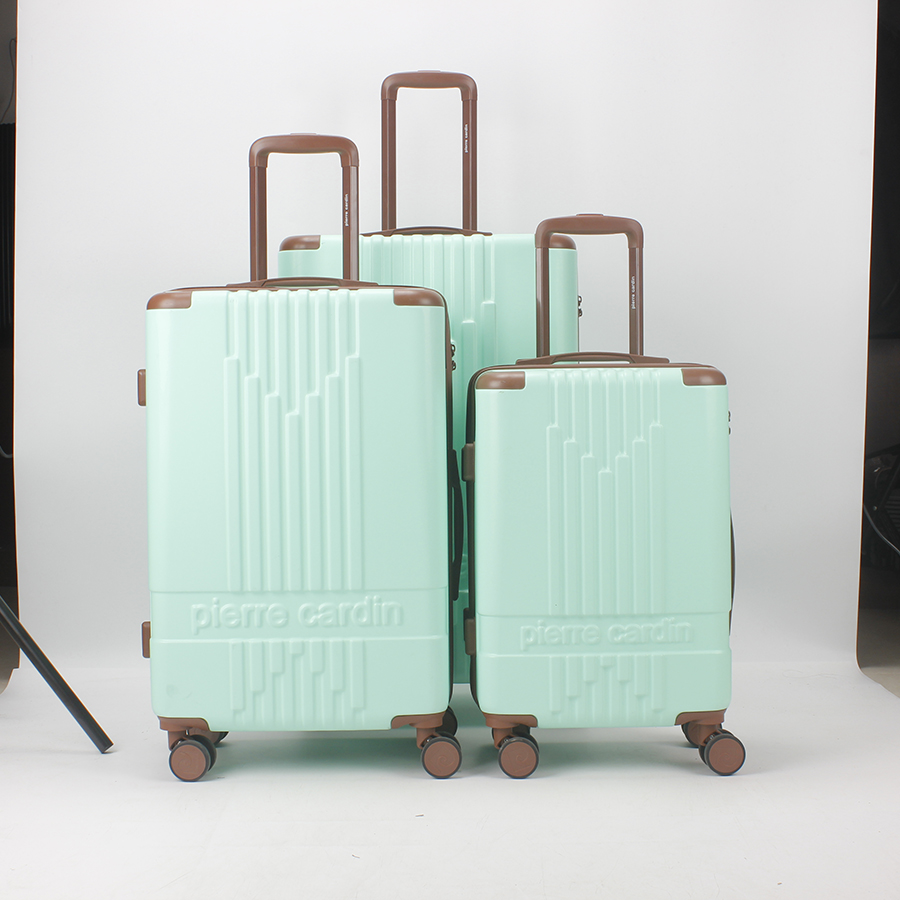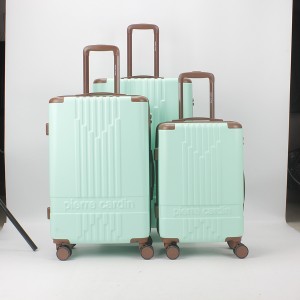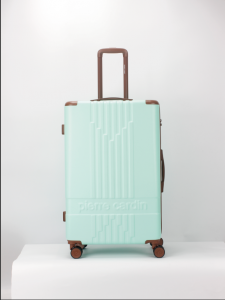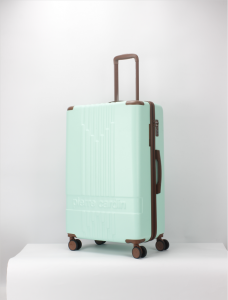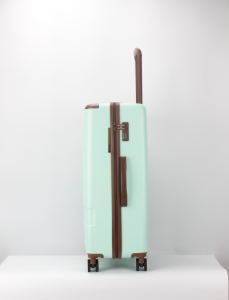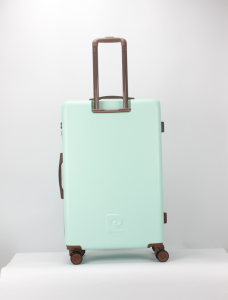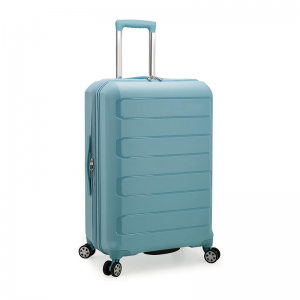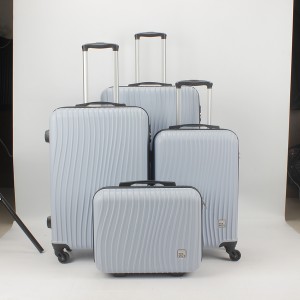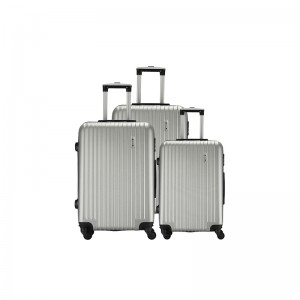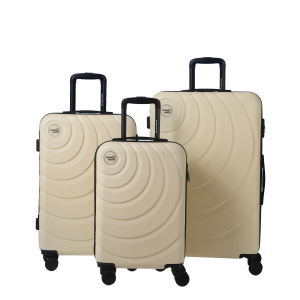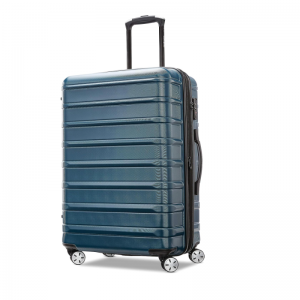New Trend Customizable colors ABS Luggage Sets 20 24 28 Inch Travel Trolley Bags 4 Wheel Luggage Suitcase
How to choose the right suitcase? You must have a certain understanding of the technology of suitcases.
Now let's introduce some knowledge of the important travel equipment of the suitcase.
How to choose the right suitcase according to the material of the box?
Cases are mainly divided into three categories: hard shell cases, soft cases and leather cases. The material of hard shell cases is mainly ABS. From the surface, we can see the hardness of the cases. The main material of soft cases is different. They are mainly made of canvas, nylon, EVA, Oxford cloth or non-woven fabric. The performance and style of different materials are different. Leather cases naturally think of cow leather, sheepskin, PU leather, etc, The leather case looks good, but the price is expensive. Here we will focus on hard case.
Hard boxes are mainly made of ABS, PP, PC, thermoplastic composites, aluminum alloys, etc. the most common ones are ABS, PC and the mixed version of ABS + PC made of two materials. Aluminum magnesium alloy box has high strength and good texture. Although the cost is higher, it is more and more popular with high-end people.
The suitcase made of ABS (synthetic resin) is hard and bulky, not easy to be pressed and deformed, and the shell has high strength. It is not affected by water, inorganic salts, alkali and a variety of acids, and is not easy to be damaged, which can effectively protect the contents. ABS can be painted in colorful colors with high gloss. The disadvantage is that the price is high, the weight is large, it is inconvenient to carry, and it is easy to break when it is hit violently, resulting in albinism, which affects the overall appearance.
PC (polycarbonate) material is actually one of the engineering plastics we call. It has excellent electrical insulation, extensibility, dimensional stability and chemical corrosion resistance, high strength, heat resistance and cold resistance (flexibility). It also has the advantages of light weight, flame retardant, non-toxic, colorable and so on, but its hardness is relatively insufficient. It is usually used in combination with ABS material to learn from each other, At the same time, products made of abs+pc material have advantages in cost performance.
The suitcases made of PP material are mostly injection molded. The inside and outside of the suitcase belong to the same color system, without inner lining. It has high strength, and its impact resistance is 40% stronger than that of ABS, with good water resistance. The development cost of PP material is relatively expensive, and the product price is also high. The spare parts are special equipment and cannot be modified. Therefore, only professional brands and manufacturers can produce it. Its characteristics are impact resistance and good water resistance.
Curv is a thermoplastic composite material, which is bonded with the matrix of the same material with highly stretched polypropylene (PP) tape. In essence, it is made of PP. CURV ® It is a patented technology from Germany. The impact resistance of curv composites below zero is better than PP and ABS. It is more wear-resistant and can resist strong impact.
Aluminum magnesium alloy boxes are made of aluminum and magnesium metals, which are the most familiar materials. Because the box has metal properties, it has strong plasticity, and is extremely durable, wear-resistant and impact resistant. Generally, the box can be used for five or ten years, with strong touch affinity. The pull rod type of this material is either integrated or combined, with beautiful appearance and noble quality, but the weight and price are much higher.
In terms of quality, aluminum magnesium alloy material >pp>pc>abs + PC > ABS. The most popular suitcase on the market is ABS + PC material, with a layer of PC on the surface and ABS inside. But generally, high-end suitcases are made of aluminum magnesium alloy /pp, especially PC trolley cases, which are in line with the current trend and have higher cost performance.
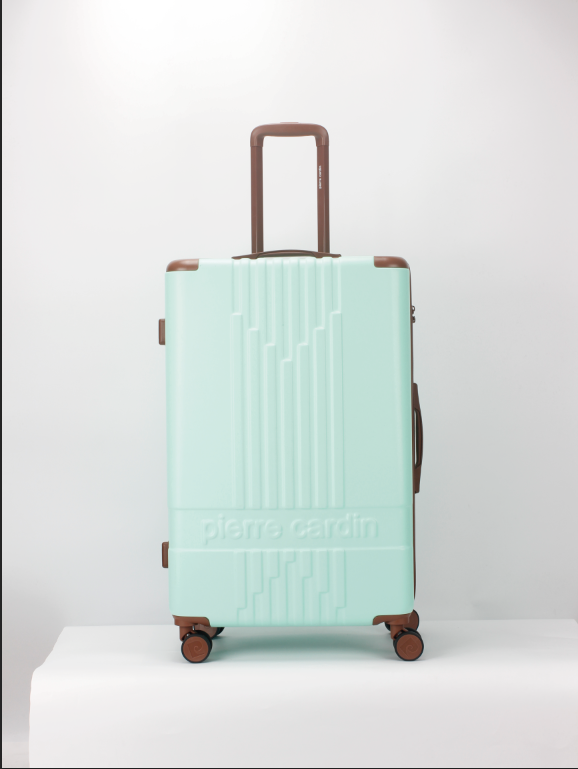
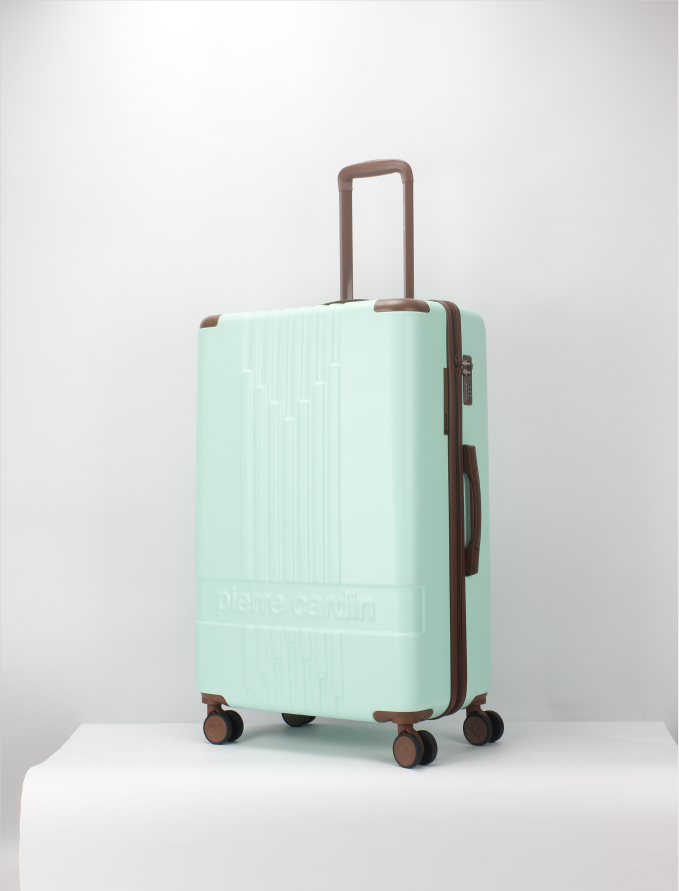
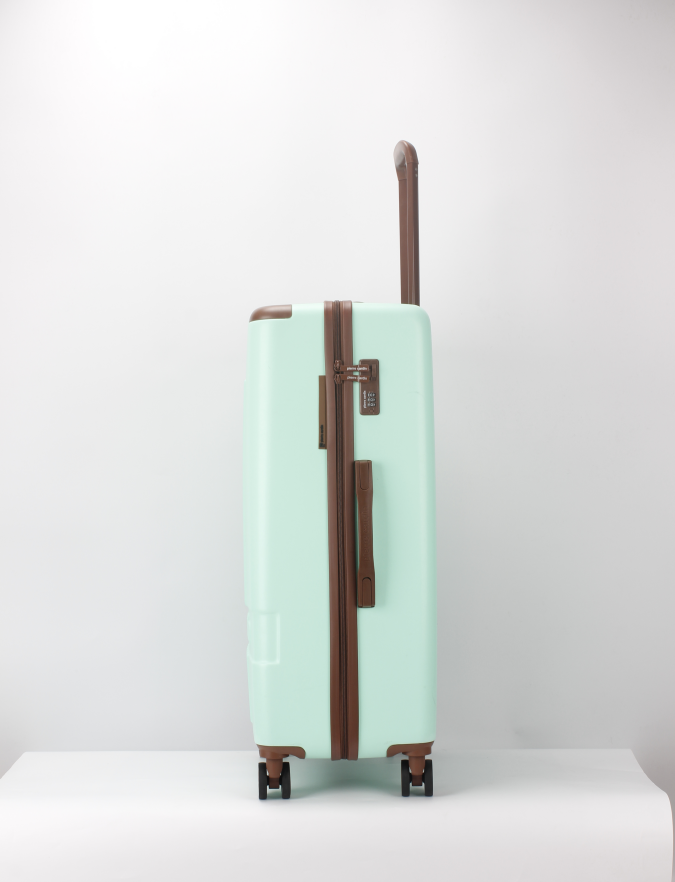
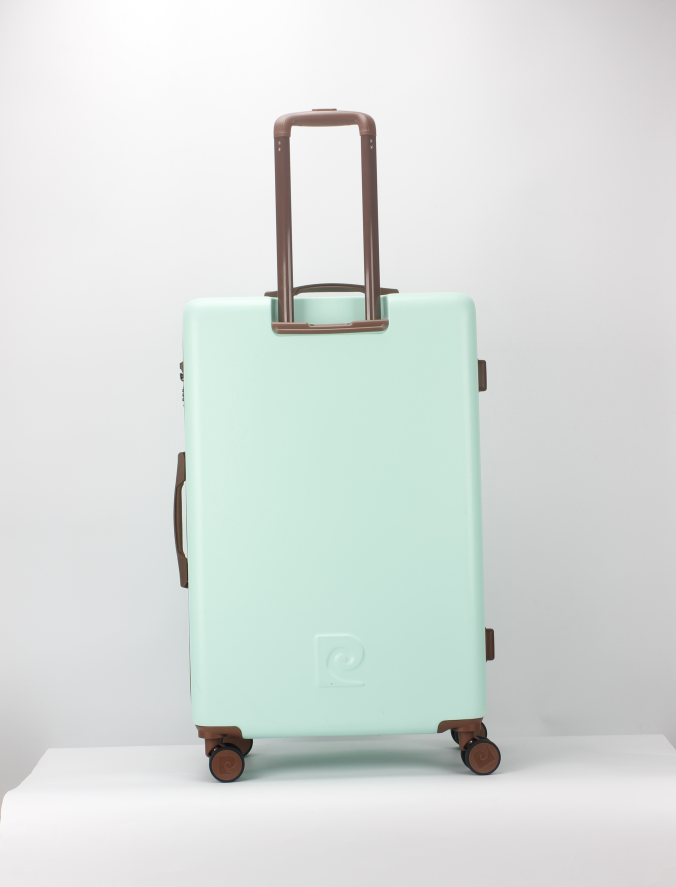
| Parameter | Description |
| Size | The dimensions of the luggage, including weight and volume |
| Material | The base material of the luggage, such as ABS, PC, nylon, etc. |
| Wheels | The number and quality of wheels, including their size and maneuverability |
| Handle | The type and quality of handle, such as telescoping, padded, or ergonomic |
| Lock | The type and strength of lock, such as TSA-approved lock or combination lock |
| Compartments | The number and configuration of compartments inside the luggage |
| Expandability | Whether the luggage is expandable or not, and the method of expanding |
| Warranty | The length and scope of the manufacturer's warranty, including repair and replacement policies |

